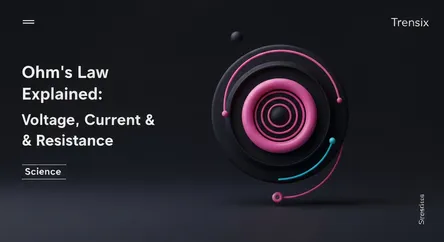Science
Ohm's Law Explained: Voltage, Current & Resistance

A simple explanation of Ohm's Law, the fundamental principle defining the relationship between voltage, current, and resistance in electrical circuits.
What is it?
Ohm's Law is a fundamental principle in physics and electrical engineering. It states that the current flowing through a conductor is directly proportional to the voltage across it, provided the temperature and other physical conditions remain unchanged. This relationship, discovered by German physicist Georg Simon Ohm in 1827, is expressed by the formula V = IR. In this equation, 'V' stands for voltage (the push behind the electrical flow), 'I' represents the current (the flow of electricity), and 'R' is the resistance (the opposition to the flow).
Why is it trending?
Ohm's Law is a timeless and foundational concept, continually relevant in our technology-driven world. It's the cornerstone for analyzing, designing, and troubleshooting any electrical circuit. Students, engineers, and technicians constantly use this law to understand and validate circuit behavior. For instance, it allows them to calculate the correct resistor to use in a circuit, predict how a circuit will behave with different voltages, or diagnose problems like short circuits or faulty components by observing unexpected current levels. Its simplicity and power make it a perpetually popular topic in science and technology education.
How does it affect people?
Ohm's Law is at the heart of nearly every electronic device people use daily. It ensures that components in your smartphone charger, laptop, and home appliances receive the correct voltage and current to function properly and safely. Technicians rely on Ohm's law to diagnose electrical faults in cars and household wiring. For example, if an appliance isn't working, they can measure voltage and resistance to determine if the current is flowing as it should. This basic principle is crucial for the safe design and reliable operation of the vast electrical infrastructure that powers modern life.